
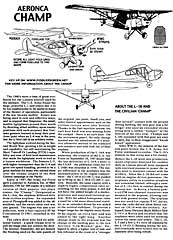

Aeronca 7AC Champion
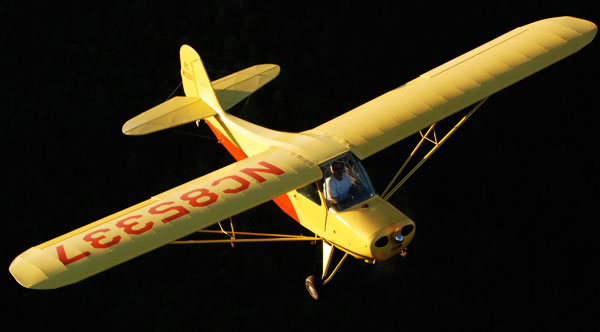
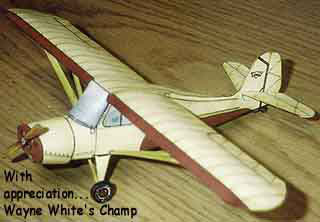
Aeronca Champ:
A popular tandem-seat 2-place personal plane
with a 65/85 h.p. Continental engine. There are many still flying
and what a special joy it is to see one with the original color
scheme from the Fiddlers Green WSAM range.
The Aeronca Champ
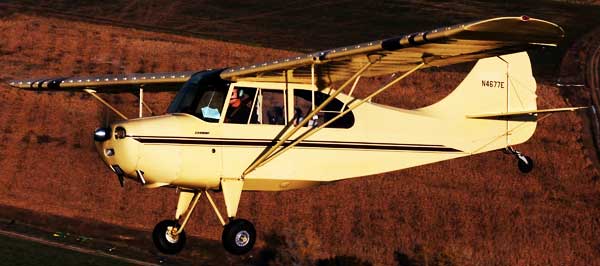
The 7AC Champion ("Champ") is dear to the hearts of many of the ,'more mature" pilots in this country. Over the years, thousands of students have felt their first control of the sky in its two-place cockpit. Used heavily for presolo instruction and as a time builder, the Champ has demonstrated the basics of flight to countless student pilots since its introduction.
Powered by four-cylinder opposed Continental engines ranging in horsepower from 65 to 90, the Champ is simple to maintain and exhibits admirable flying characteristics. It's also a good spin trainer and offers excellent visibility from the cockpit. In a good headwind (like the Piper J-3 Cub), the Aeronca Champ will take off with almost no ground roll at all. However, the Champ is both faster and more comfortable than the J-3.
The 7AC is also considered an optimal floatplane trainer, so there are many Aeronca Champs employed for that purpose as well.
Aeronca Brief History
Aeronca Aircraft Company, Middletown, O., was the new
name of the old established Aeronautical Corporation of America,
manufacturers of Aeronca planes. The company  remained under
the same management. It moved from Cincinnati to Middletown
in June, 1940, a year which surpassed all others in point of production and sales. Aeronca reported more than 1,100 orders for
its light plane models during the year. Two new models were introduced. one was the Aeronca Tandem Trainer, which was designed
primarily for use in the Civilian Pilot Training Program.
remained under
the same management. It moved from Cincinnati to Middletown
in June, 1940, a year which surpassed all others in point of production and sales. Aeronca reported more than 1,100 orders for
its light plane models during the year. Two new models were introduced. one was the Aeronca Tandem Trainer, which was designed
primarily for use in the Civilian Pilot Training Program.
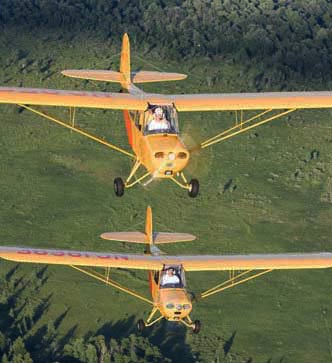 Approximately 700 machines were sold for that purpose. In September, 1940,
the Aeronca Super Chief was introduced to the private flying market.
The new plant on the Municipal Airport at Middletown, O., increased
production floor space by nearly roo per cent and enabled the company
to step up its production proportionately. Plans for 1941 contemplated a 35 percent increase in manufacturing space and similar increase in production.
Approximately 700 machines were sold for that purpose. In September, 1940,
the Aeronca Super Chief was introduced to the private flying market.
The new plant on the Municipal Airport at Middletown, O., increased
production floor space by nearly roo per cent and enabled the company
to step up its production proportionately. Plans for 1941 contemplated a 35 percent increase in manufacturing space and similar increase in production.
Aeronca Champ Construction:
As with many light aircraft of the time, the Champ’s fuselage and tail surfaces are constructed of welded metal tubing. The outer shape of the fuselage is created by a combination of wooden formers and longerons, covered with fabric. The cross-section of the metal fuselage truss is triangular, a design feature which can be traced all the way back to the earliest Aeronca C-2 design of the late 1920s.
Like the Piper Cub with which it competed, the Champ features tandem seating. While the J-3 model of the Cub is soloed from the rear seat, the Champ can be soloed from the front, giving improved forward visibility on the ground and during takeoffs, landings, and climbs. The Champ has a wider cabin than the Cub and offers better visibility.
The strut-braced wings of the Champ are, like the fuselage and tail surfaces, fabric covered, utilizing aluminum ribs. Most Champs were built with wooden spars. American Champion has used aluminum spars in the aircraft it has produced and has, as well, made the aluminum-spar wings available for retrofit installation on older aircraft.
The landing gear of most Champs is in a conventional arrangement, though a model with tricycle gear was produced, and a model with reversed tricycle gear was tried. Conventional-gear Champs feature a steerable tailwheel and most have steel tube main gear which use an oleo strut for shock absorption; one vergent utilized spring steel main gear, and American Champion is using aluminum gear legs in its production model of the Champ. The tricycle-gear Champs use the steel tube and oleo strut main gear, mating these with an oleo strut nose gear.
Aeronca Champion Seaplane
The Aeronca Champion was an immediate success as a seaplane
training airplane. With its Edo floats, and a strong following of flight
instructors, the airplane soon found its way to the top of the
instructional favorite list among seaplane operators. Although it only
has a door on the right side (on a seaplane a door on each side is nice
for docking in strong winds), the airplane has many nice features for
float flying. The Champ has incredible short field characteristics, and
aileron sensitivity down well below stall speed.
These features, combined with what is almost an excess of rudder and elevator authority, are admirable traits for a floatplane trainer. The type is a common sight in Alaska and many are owned by sportsmen and cabin owners, as they are ideally suited for flying somewhere on a weekend hunting or fishing trip. The airplane has a wide cabin for a tandem airplane, and if you are flying solo a good load of cargo can be carried in its interior as well as in (and on) the floats. (Note: Floats are included with the Fiddlersgreen Aeronca Champian Kit)
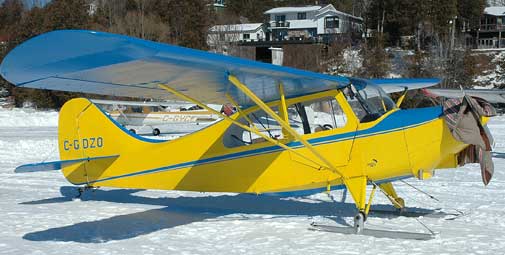 |
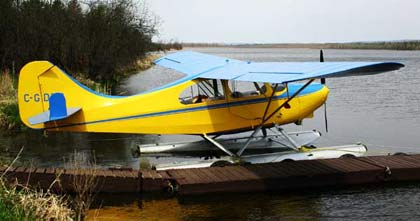 It must be lovely to have a lakeside home with an Aeronca Champ as an accessory |
Production History
Built by Aeronca Aircraft Corporation, the Champ first flew in 1944, having been designed at the same time with the 11AC Chief—the Champ with tandem seating and joystick controls, and the Chief with side-by-side seating and yoke controls. The intention was to simplify production and control costs by building a pair of aircraft with a significant number of parts in common; in fact, the two designs share between 70% and 80% of their parts. The tail surfaces, wings, landing gear, and firewall/engine, most accessories, and cowling, are common to both airplanes.
Selling for $2,095, the Champ outsold the Chief by an 8 to 1 margin. Engine upgrades in 1948 and 1949 resulted in the Models 7DC and 7EC. Between 1945 and 1950, 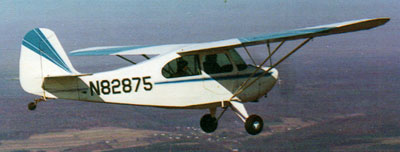 Aeronca was producing 50 light aircraft per day and by the time production ended in 1951, the company had sold more than 10,000 Champions.
Aeronca was producing 50 light aircraft per day and by the time production ended in 1951, the company had sold more than 10,000 Champions.
Aeronca ceased all production of light aircraft in 1951, and the Champ design was sold in 1954 to Champion Aircraft. Then Champion Aircraft was acquired in 1970 by Bellanca Aircraft which continued production oftheir Champ-derived Citabria and Decathlon designs. In 1971, Bellanca introduced the 7ACA version of the Champ as a more basic complement to their other designs. Only a handful of 7ACA's were built between 1971 and 1972. Sadly, Bellanca ceased all production in the early 1980s.
American Champion Aircraft Corporation acquired the Champ and related designs in1989. In 2001, they were rumored to be considering a reintroduction of the Champ design as a 7EC powered by a Jabiru Aircraft engine. While a test version was flown, this combination was not put into production. With the creation of the Light Sport category of aircraft in the United States by the FAA, American Champion in late 2007 began producing a revised version of the 7EC.
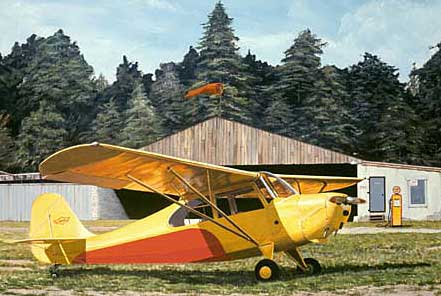
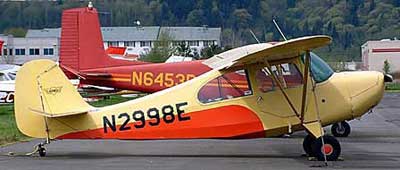 |
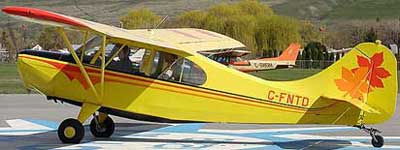 |
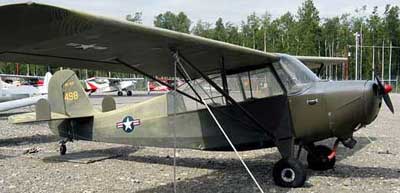 |
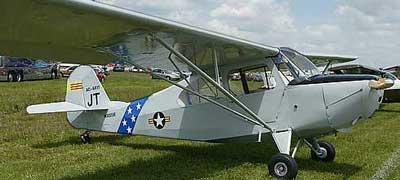 |
Two examples of the US Military's Aeronca L-16s L-Birds. |
|
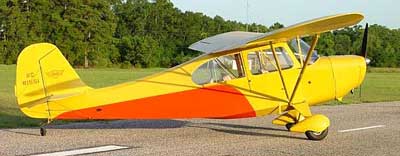 |
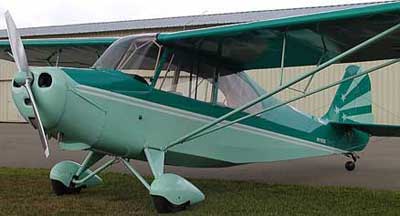 |
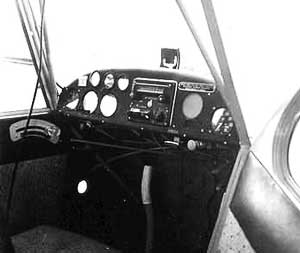 Cockpit of the Aeronca 7AC Champion. Cockpit of the Aeronca 7AC Champion. |
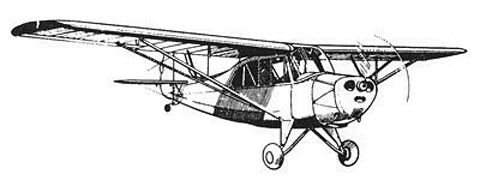 Line drawing of the Aeronca Champ |
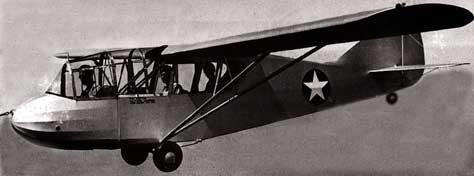 |
On tow is a three-place aeronca TG-5 training glider, converted from the stanard 1941 Aeronca Defender light plane. The attachment point for the removable glider nose is clearly visable. |
Aeronca Champ Specifications
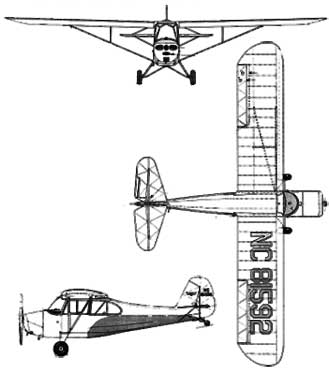 |
Crew: 1, pilot |
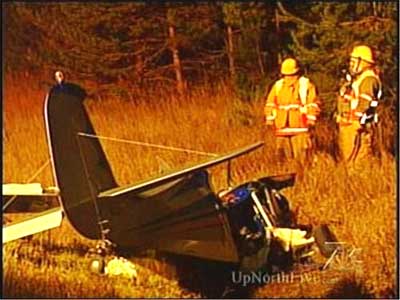 |
Dr. Patrick J. McNamara, 52, and Christopher A. Hasty, 32, died when McNamara's Aeronca 7AC Champion crashed in a ditch off I-75 near Vanderbilt in Gaylord, Michigan |


